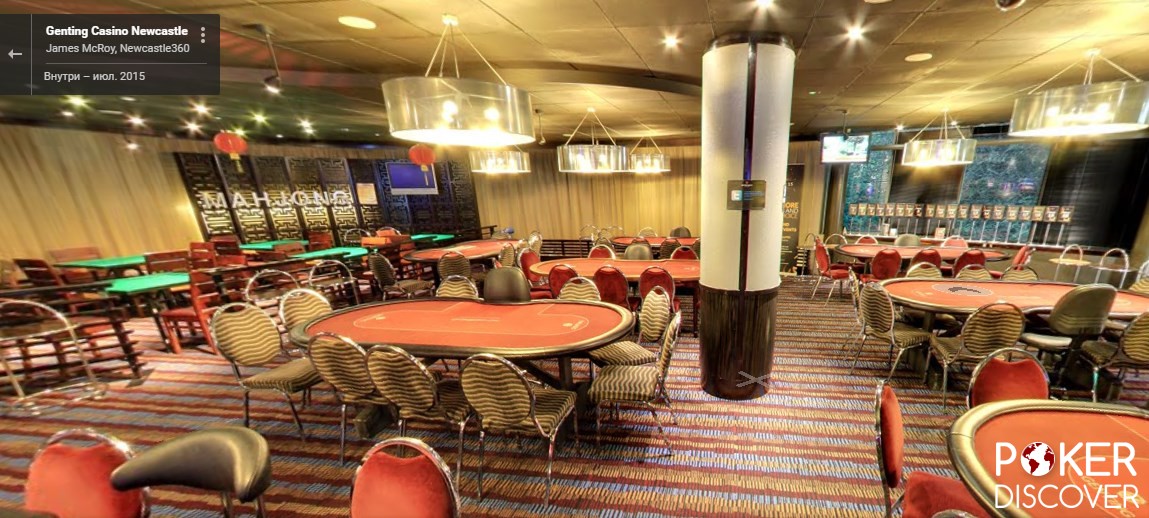Rebuy Poker
- Rebuy Poker Term
- Pokerstars Rebuy Format
- Rebuy Poker
- Rebuy Poker Tournament Rules
- Rebuy In Pokerstars
- Poker Rebuy Rules
Poker Strategy With Greg Raymer: Re-Entry and Rebuy Tournaments Part Three: Late Registration: by Greg Raymer Published: Nov 04, 2020. Website of Rebuy Stars' poker clubs. We use our own and third party cookies. If you continue browsing we consider you accept the use of cookies. What is Rebuy in Poker? Rebuy means to purchase more chips to add to our stack. Rebuying is most commonly performed in cash games, but also makes an appearance in specific tournament formats. Rebuy tournaments allow players to purchase (rebuy) a new chip stack after running out of chips, but only while the rebuy period is still active. Rebuy Poker Tournament Tips. A Beginners Guide to Beating Rebuy Poker Tournaments. Busting out of a tournament early can be very frustrating, especially if you exit the event due to a bad.
Pokerteam articles 11At Rebuy tournaments you can buy more chips if you run out or run low. In other words, Rebuys allow the eliminated player another chance, which goes against the sudden death aspect of most traditional online poker tournaments - in that if you lose all of your chips, you are eliminated. The Rebuy feature allows eliminated players to buy back into the online poker tournament.
The amount of chips you can Rebuy is usually identical to the buy-in amount, although it can be lower, and most often you receive chips at the same exchange rate as the opening buy-in or even at an improved rate (for instance, 2000 chips for $40).
The Rebuy period is usually restricted to a set number of Rebuys and takes place in the initial rounds of the tournament, typically the first hour or until the end of the first level. During the time period that Rebuys are permitted, the action tends to be far looser as players strive for that extra edge, yet have the ability to get back in the game if things don’t work out.

More conservative players may feel disadvantaged by Rebuys due to the possibility of others receiving a second chance if not multiple chances. They may feel somewhat jilted, but it all balances out in the end since this option is available to all players and those who choose to take it pay for the privilege each time. In addition, if a player wins a big pot as a result of being overly expressive they are not going to be as loose. Why would they want to lose it all and revert back to the amount of the starting chips?

The Add-on Period
Once the Rebuy period ends, this frantic pace tends to settle down and frequently an Add-on period begins. This is your final opportunity to buy additional chips prior to the tournament's Freezeout. Most often, players are able to acquire the Add-on, yet at times it is limited only to players whose chip count does not reach a fixed amount.
Add-ons offer online poker players the chance to top up their chip stacks in the midst of the online poker tournament. This normally happens at the end of the first level or first hour. Anyone can Add-on, regardless of their chip stack at the time. The player who decides to proceed with the Add-on will increase his stack size by the amount of starting chips each player received.
It is up to the individual whether or not he wishes to Add-on. You may feel that this is the soft way out and it would be better for your game if you didn’t Add-on. On the other hand, it may help your chances of success in the online poker tournament to have some extra chips at your disposal.
It is generally recommended to make a Rebuy whenever you have the chance. Therefore, when you play at a Rebuy tournament, take into consideration that you will most likely spend more than the opening buy-in.
Like many things in poker, it is a matter of personal preference, and it is up to you to choose what you feel most comfortable with and of course the online poker games that are most appropriate for you.
Pauline Davis
Card Player Magazine, available in print and online, covers poker strategy, poker news, online and casino poker, and poker legislation. Sign up today for a digital subscription to access more than 800 magazine issues and get 26 new issues per year!
Please let me encourage you to reach out to me with article ideas and questions for future columns. You can tweet to me at @FossilMan, or send me a message at info@fossilmanpoker.com.
More from this series:
Part 1: Definitions
Part 2: Adjusting Your Attitude
Part 4: Strategy Considerations
In my last article, I spoke about how some players do not like re-entry and rebuy tournaments. The main concern seems to be the idea that these events permit players with deeper pockets to gain an advantage over those without. There is also a concern that some players pursue an extremely loose, aggressive strategy during the re-entry or rebuy period, and this makes the game harder to play for those who don’t plan on firing more than one bullet.
Rebuy Poker Term
I took the time to explain why I disagree with these concerns. I will say, however, that there is a problem with many re-entry tournaments. The problem isn’t with the re-entry aspect, but with the late registration period.
Today, most tournaments have a late registration period, but that wasn’t always the case. It is actually amazing how long we played tournaments without the ability to register late.
I can remember living in San Diego County in the 1990s, leaving work on a Friday to crawl through the traffic up the I-805 and the I-5, spending hours to get to Oceanside for a tournament. If the tournament started at 7:00, and you got there at 7:01, too bad, so sad, you were shut out. For some reason, the concept of registering late just didn’t exist.
It was great when this changed and most tournaments started offering the ability to register late. At first, this was done primarily to address issues such as those I faced. The poker room was extending registration to accommodate a player whose arrival was delayed by traffic or the like. Usually, the late registration period was 30 minutes, maybe an hour. The main point was to let people get in despite running late.
Of course, the cardrooms didn’t take long to notice that late registration meant an increase in prize pools, and the rake, so the length of the late registration period was extended. First it was an hour, then two hours, and three hours, etc. Most multi-day tournaments now offer late registration through much of day 1, anywhere from halfway through day 1, and even up until the start of day 2. In a few cases, even later!
The primary reason for late registration today is no longer to help a player who is running late. It is to allow a player to enter, play a while, bust out, and re-enter again on the same day. Many of these tournaments offer large guarantees, and by permitting very late registration, it is much more likely they will meet the guarantee and not have to pay an overlay.
In itself, this is not a bad thing. As I discussed in my last article, I do not believe re-entry (or late registration) favors the deep pockets. And even if this does lead to some players pursuing a hyper-loose-aggressive strategy during the re-entry period, I’m fine with taking advantage of that as well.

The real problem is equity. Kenny Hallaert, the excellent Belgian poker player and tournament director, pointed this out very effectively in his paper, “The Impact of Late Registration on Stack Value According to the Independent Chip Model in Multi-Table Tournaments.”
In it he shows mathematical proof that permitting a player to register late enough is the same as giving that player money out of the prize pool. Obviously, they are not really being given money, but they are being given equity. His work shows how the late-registering player has gained equity as soon as they enter, even before playing a hand.
If a tournament starts each player with 30,000 in chips for a $1,000 buy-in (ignoring rake), and the last person to enter comes in when two-thirds of the field is gone, their stack is already worth more than $1,000.
Pokerstars Rebuy Format

This is true even though their average opponent has three times as many chips. Since so many have already been eliminated, they are that much closer to making the money. Close enough, in fact, that ICM math says their 30,000-stack is worth about $1,100. And there is only one place that extra $100 in equity can come from. It is taken from the equity of every other player still in the event. If a player enters even later, when three-fourths of the field is gone, their equity is about 15 percent higher than the buy-in they paid.
The prevailing idea was that poker pros have a bigger skill advantage when the blinds are low and there are more amateurs or satellite winners still in the tournament, but Hallaert’s math clearly shows the equity gained.
Rebuy Poker
None of this has anything directly to do with re-entry, of course, but it is a problem that has become more apparent with later registration. If a player re-enters when the field is greatly reduced, this effect comes into play. But this effect is the same for a new player or a re-entering player. The answer to this problem is not to eliminate re-entry, but to limit the time during which re-entry or late registration is available.
Any experienced tournament director can estimate, based on a given structure, approximately what percentage of the field will be eliminated at any point in time. All they need to do is schedule the close of registration so that no more than about one-third of the field has been eliminated. Although Hallaert did not recommend this number specifically, extrapolating from his results, if a player registers with two-thirds or more of the field still in play, their ICM advantage from registering late should be no more than about two percent, which is much more acceptable than the 5-15 percent seen in the scenarios he did write about.
Yes, the player who enters late is coming in short-stacked. And I do not just mean compared to the other players, but to the blinds as well. This means they are in a high-variance situation. However, it is important to be aware that it is a profitable situation for them regardless.
Rebuy Poker Tournament Rules
If your tournament offers super-late registration, one option is to not play. That is, vote with your feet. If you choose this line, be sure to tell the room management why you didn’t play. If enough players agree with you, they will probably change this feature. Another option is to take advantage of the situation by choosing to enter late yourself, gaining this ICM advantage.
Rebuy In Pokerstars
Whatever you choose, have fun, and play smart! ♠
Poker Rebuy Rules
Greg Raymer is the 2004 World Series of Poker main event champion, winner of numerous major titles, and has more than $7 million in earnings. He recently authored FossilMan’s Winning Tournament Strategies, available from D&B Publishing, Amazon, and other retailers. He is sponsored by Blue Shark Optics, YouStake, and ShareMyPair. To contact Greg please tweet @FossilMan or visit his website.